

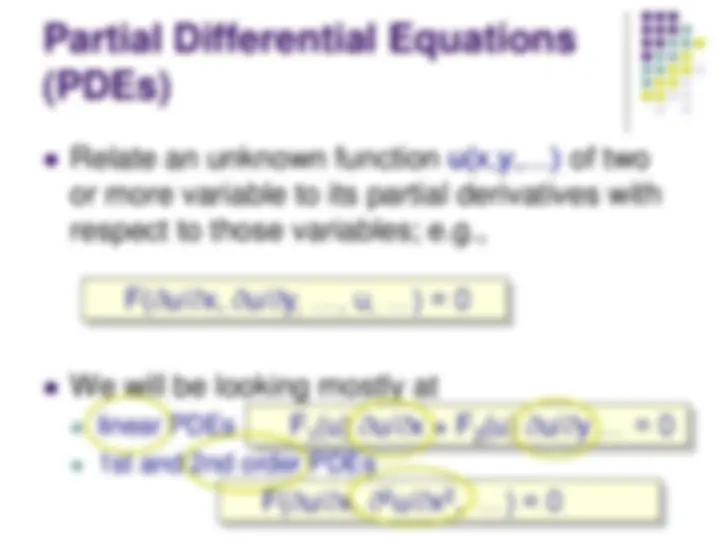

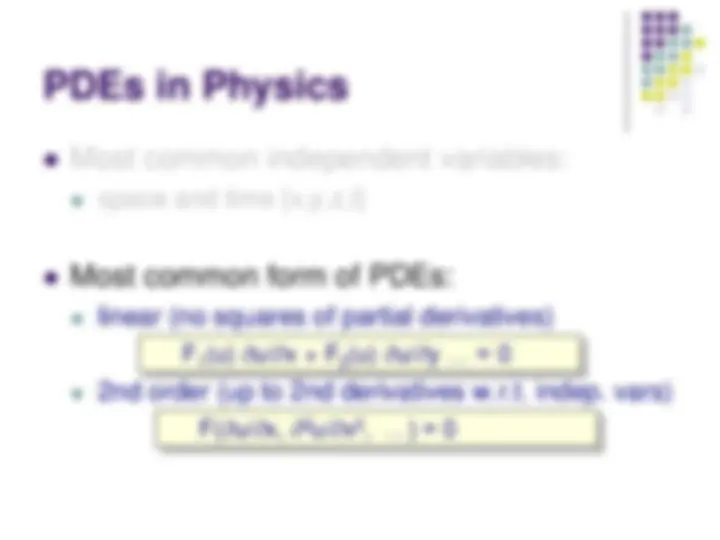

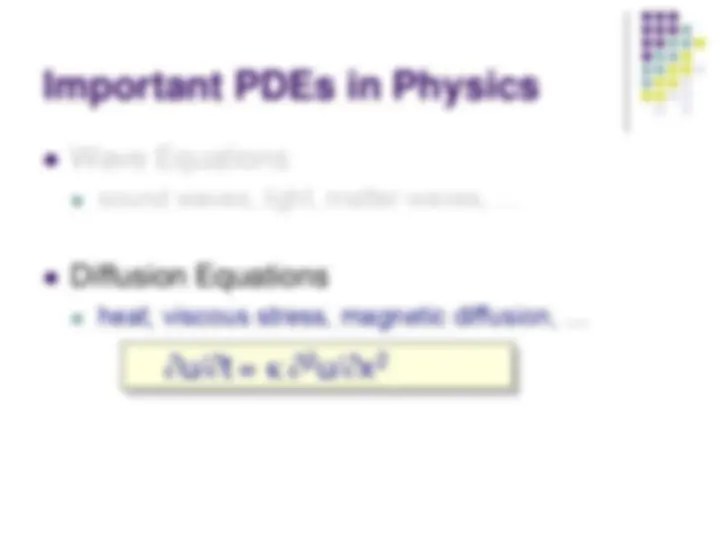





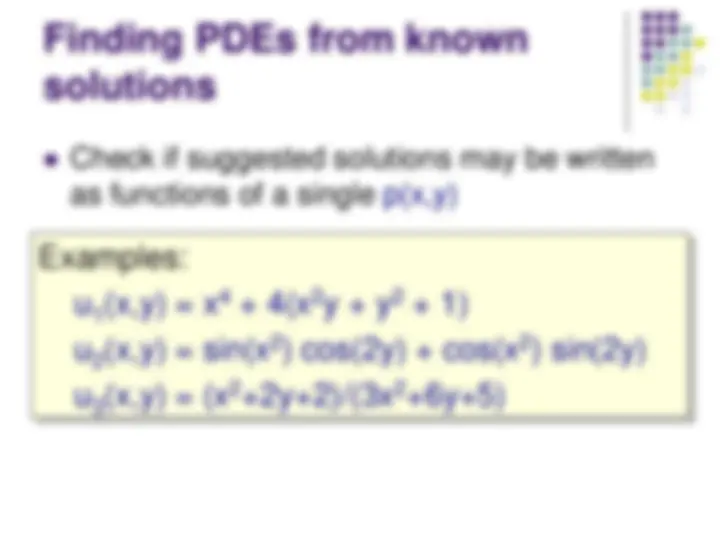
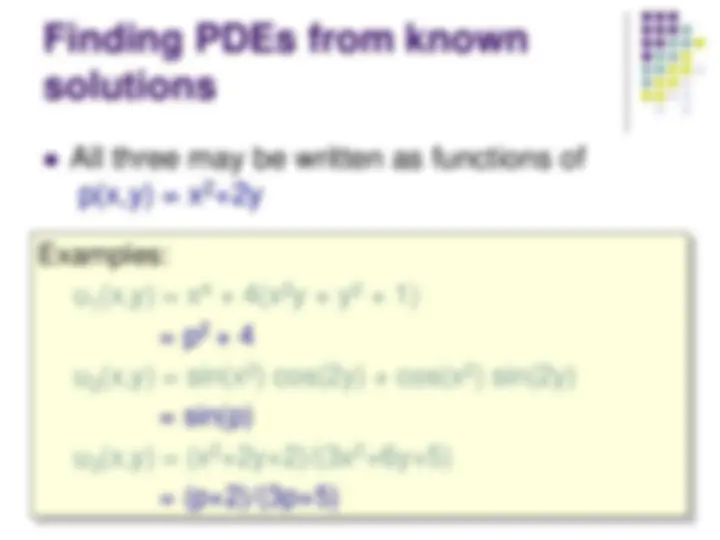

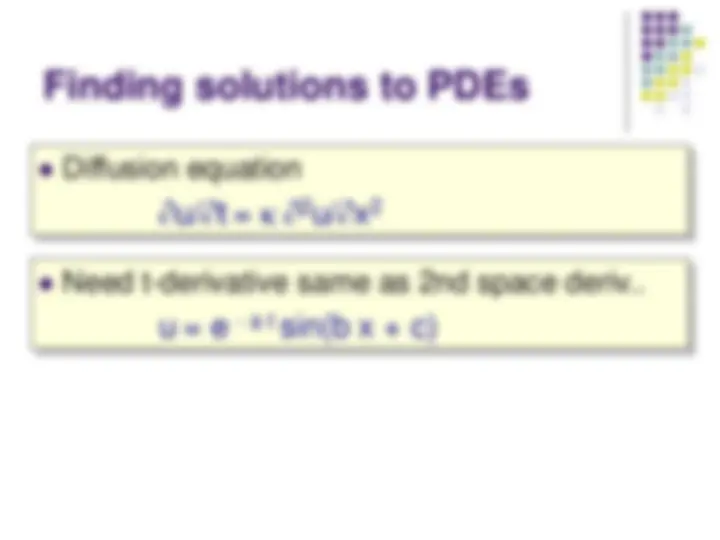
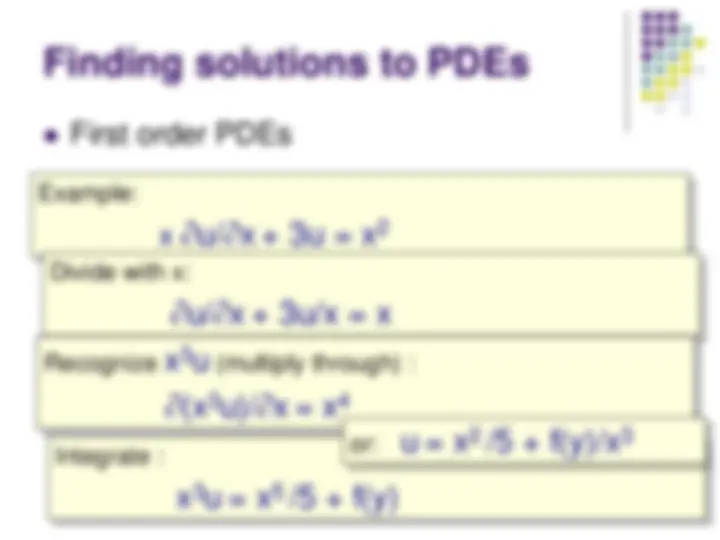



Study with the several resources on Docsity

Earn points by helping other students or get them with a premium plan


Prepare for your exams
Study with the several resources on Docsity

Earn points to download
Earn points by helping other students or get them with a premium plan
Community
Ask the community for help and clear up your study doubts
Discover the best universities in your country according to Docsity users
Free resources
Download our free guides on studying techniques, anxiety management strategies, and thesis advice from Docsity tutors
This lecture slide is part of course Differential Equations by Dr. Madhu Raja at Institute of Mathematics and Applications. Its main points are: Partial, Differential, Equations, Maple, Structure, Structure, PDE, Physics, First, Order
Typology: Slides
1 / 25

This page cannot be seen from the preview
Don't miss anything!


















Register Name: exactly as under ISIS! Student ID: phone number Quiz: Part I Multiple selection (1 of 2) Anonymous (“flash card”) training Mastery: Part II 2 problems
Relate an unknown function u(x,y,…) of two or more variable to its partial derivatives with respect to those variables; e.g., We will be looking mostly at linear PDEs 1st and 2nd order PDEs F(u/x, u/y, …, u, …) = 0 F 1 (u) u/x + F 2 (u) u/y … = 0 F(u/x, 2 u/x 2 , …) = 0
Relate an unknown function u(x,y,…) of two or more variable to its partial derivatives with respect to those variables; e.g., We often use the notation x u inst. of u/x can be easily generated in web pages (jfr. Mat-F netsted) F(u/x, u/y, …, u, …) = 0
Most common independent variables: space and time {x,y,z,t}
Most common independent variables: space and time {x,y,z,t} Most common form of PDEs: linear (no squares of partial derivatives) 2nd order (up to 2nd derivatives w.r.t. indep. vars) F 1 (u) u/x + F 2 (u) u/y … = 0 F(u/x, 2 u/x 2 , …) = 0
Wave Equations sound waves, light, matter waves, … Diffusion Equations heat, viscous stress, magnetic diffusion, … u/t = 2 u/x 2
Wave Equations sound waves, light, matter waves, … Diffusion Equations heat, viscous stress, magnetic diffusion, … Laplace and Poisson Equations gravity, electric potential, … 2 u/x 2
Harder! Analytically Manually, from rules, experience, known cases, ... Computer programs (Maple, Mathematica, …)
Harder! Analytically Manually, from rules, experience, known cases, ... Computer programs (Maple, Mathematica, …) Numerically Tool programs (Maple, Mathematica, …) Programming languages + methods (Numerical Recipes, …)
Mondays; analytical work (manual mostly) groups are now assigned (was delayed by ISIS) it is OK to trade groups (use the ISIS mechanism) Wednesdays; computer-aided Maple Maple T.A. (if we can get it – was promised) problem posing; individual variations interactive problem solving semi-automatic grading
Finding PDEs from known solutions explained here
Finding PDEs from known solutions explained here Test if expressions are solutions straightforward Find solutions to PDEs by combining partial derivatives (trial and error)
Check if suggested solutions may be written as functions of a single p(x,y) Examples: u 1 (x,y) = x 4
u 2 (x,y) = sin(x 2 ) cos(2y) + cos(x 2 ) sin(2y) u 3 (x,y) = (x 2 +2y+2)/(3x 2 +6y+5)